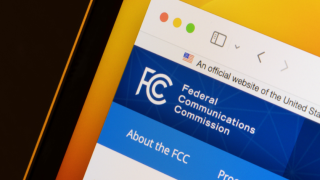The unannounced deal to use Huawei is in the 4G upgrade of the networks AT&T bought a year ago when it acquired two Mexican operators, Iusacell and Nextel. The company also uses Ericsson equipment in AT&T Mexico.
AT&T spent $4 billion buying the companies and “we made a commitment to the people of Mexico that we would invest another $3 billion by 2018 to build out a 4G LTE network to 100 million people in Mexico”, De la Vega told Capacity in an interview on the AT&T booth at Mobile World Congress in Barcelona.
So far the new 4G network covers 45 million the planned 100 million population, implying a spend of around $1.3 billion of the total $3 billion. “You can do the math,” said De la Vega.
He confirmed that this is the first time AT&T has used Huawei equipment in any of its network.
The company is building out the new 4G network to be completely integrated with its US LTE network.
“The whole idea is to make it an extension so it should look like you’re in the US. There is very little difference. That’s the beauty of having it contiguous,” he said. “It should be seamless. You should be able to take a car from Canada to Mexico and you shouldn’t drop a call.”
The deal is likely to be controversial in the US because in October 2012 the major US operators – AT&T, Sprint, T-Mobile US and Verizon – were blocked from buying network equipment from Chinese vendors because of alleged security threats. Two years earlier Sprint was forced to withdraw plans to use Huawei and ZTE equipment after a political campaign.
Huawei was a supplier in Mexico before the AT&T acquisition, but it is clear that the company has been a part of the re-equipment programme over the past year.
“We’re hitting the major population centres. Until we build a network that’s a high quality network we’re not putting the AT&T brand on the property,” said De la Vega. “We’ve just finished doing that in Mexico City and in other cities.” The LTE network now reaches 44 cities, AT&T confirmed.
Asked how the Huawei kit was performing in Mexico, De la Vega said: “So far, excellent. Huawei is a good supplier.” Would AT&T benefit from using Huawei in the US? “Perhaps,” he said, but he acknowledged the political difficulties.
Comparing the dispute between Apple and US law enforcement, he said: “There shouldn’t be a company that dictates a policy to the country. By the same token there shouldn’t be a government agency that also dictates it unilaterally.”
Neither Ericsson nor Huawei have announced their contracts with AT&T Mexico. Asked to comment, a Huawei spokesman said: “Huawei was the incumbent provider [before the acquisition]. Never announced.”
It’s clear that US operators including AT&T have been trying to build bridges with Chinese vendors. At the start of MWC week, John Donovan, chief strategy officer and group president of AT&T Technology and Operations, and Radhika Venkatraman, Verizon Wireless’s SVP and CIO, took part in a Light Reading digital transformation summit in Barcelona that was sponsored by Huawei.
Clarification, 3 March. An AT&T spokesperson emailed the following comment: "NII Holdings announced its selection of Huawei as Nextel Mexico’s UMTS-based networks and related services in 2011, prior to AT&T acquiring Nextel Mexico from NII Holdings Inc. in April 2015."





